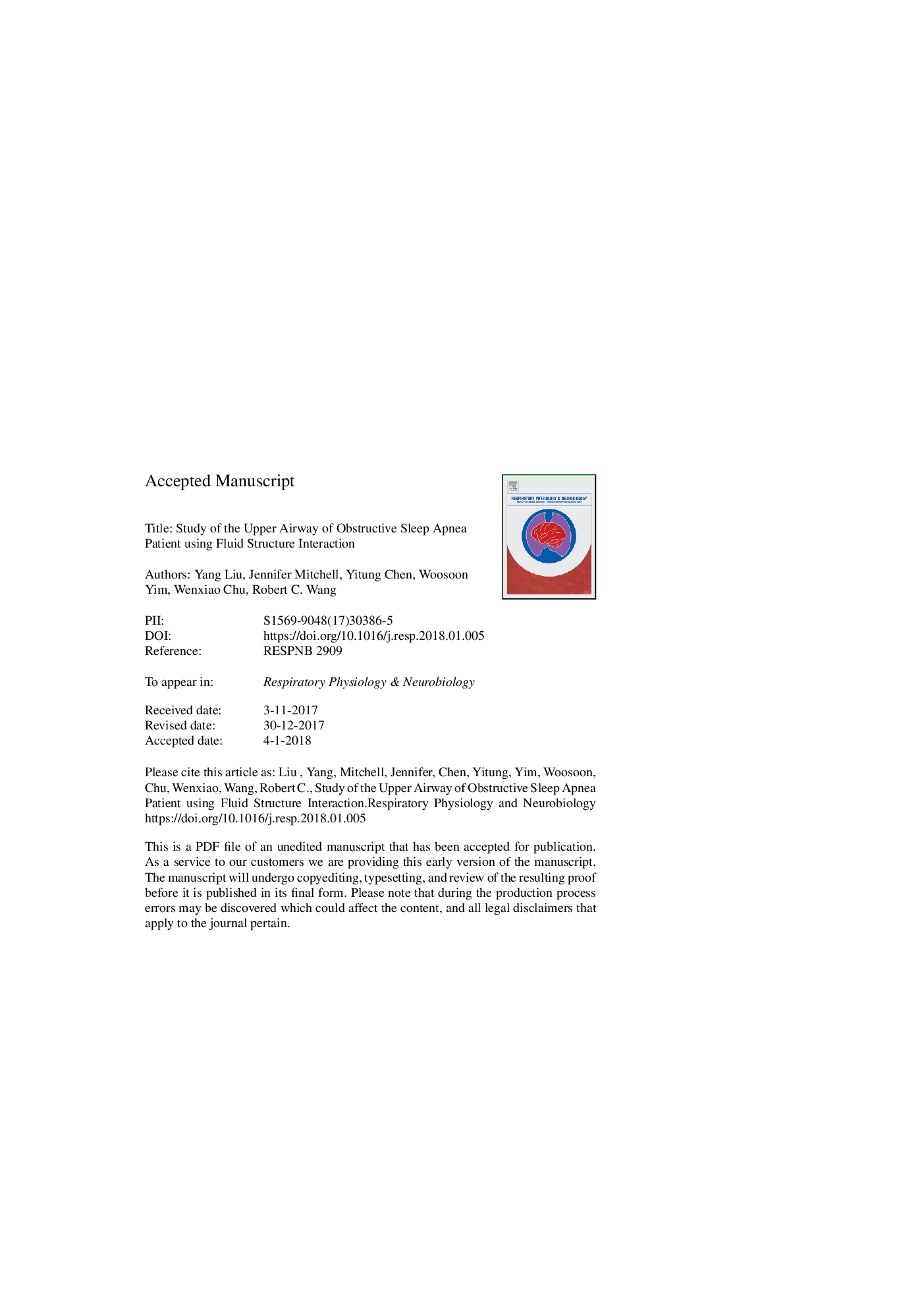| Article ID | Journal | Published Year | Pages | File Type |
|---|---|---|---|---|
| 8650833 | Respiratory Physiology & Neurobiology | 2018 | 28 Pages |
Abstract
Up to 14% of the U.S. population is estimated to have obstructive sleep apnea (OSA), while the outcomes of the treatments have variable results. In the current study, a three-dimensional fluid-structure interaction modeling was applied to simulate the upper airway to identify the precise location, severity, and characteristic of airway collapse. This was accomplished using Simpleware® and ANSYS® software applied to a 3-D rendering of the airway in a real patient with severe OSA. During this simulation, areas which are prone to collapse and precipitate apneic episodes were identified at the tip of the soft palate and the base of the tongue, with intrathoracic pressure as low as â1370â¯Pa. These results are consistent with anatomical structures currently indicated and targeted in the treatment of OSA. This improved FSI modeling simulation, which is the first to completely model the whole upper airway without consideration of the nasal cavity in OSA, and can allow virtual modification of the airway prior to actual treatment by doctors.
Keywords
Related Topics
Life Sciences
Biochemistry, Genetics and Molecular Biology
Physiology
Authors
Yang Liu, Jennifer Mitchell, Yitung Chen, Woosoon Yim, Wenxiao Chu, Robert C. Wang,
